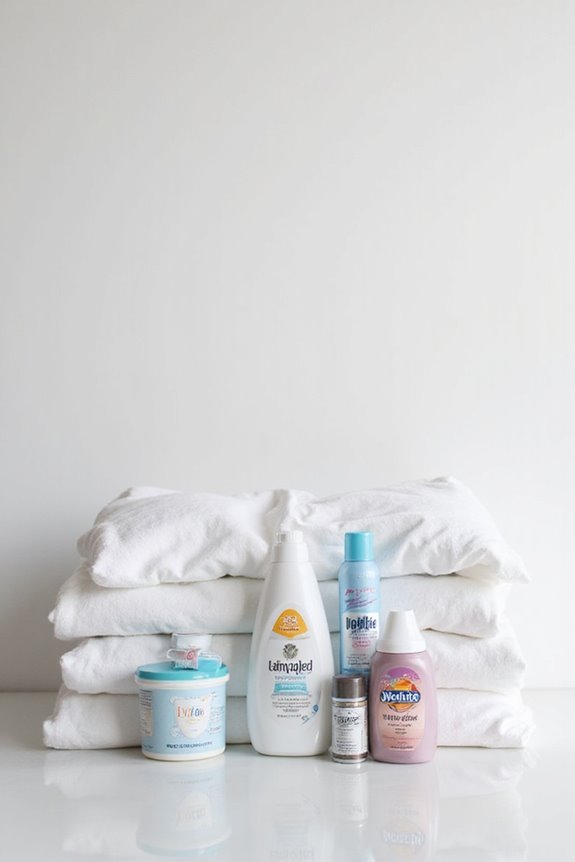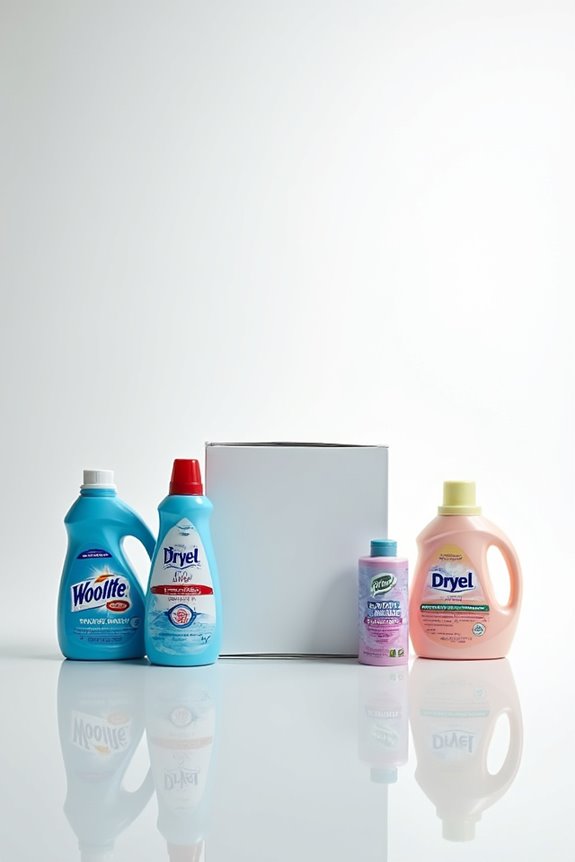To keep our athletic gear fresh, we need a solid laundry routine. First, we should wash garments ASAP to cut down on odors. Turning them inside out helps, especially those sweat-soaked areas. When sorting, separate colors and fabrics—activewear deserves its own pile! For detergent, HEX Performance is our go-to for tackling stubborn smells and stains. Finally, let’s air dry our gear instead of tossing it in the dryer. There’s more to learn about maintaining freshness!
Key Takeaways
- Wash athletic garments immediately after use to minimize odor and bacteria buildup.
- Sort clothes by color and fabric type, washing activewear separately for best results.
- Use specialized detergents like HEX Performance for effective cleaning and odor removal.
- Opt for gentle cycles with cold water to protect synthetic fibers from damage.
- Air dry garments in a well-ventilated area to maintain moisture-wicking properties and prevent mold.
Immediate Care and Pre-Washing Practices
When we finish a tough workout, it’s tempting to toss our sweaty gear in the hamper and call it a day. But trust us, immediate washing is key! First, let’s turn those athletic garments inside out. This exposes the sweat-soaked areas, helping to reduce odors. If we can’t wash them right away, allow them to drip-dry partially. This prevents that funky smell from developing.
For pre-treatment, a paste of baking soda and water works wonders on underarm stains. Or try a saltwater soak to draw out odors. Just remember, avoid fabric softeners—they trap odors and reduce breathability. With a little care, our gear will stay fresh, and we won’t have to worry about embarrassing odors next time we hit the gym! Additionally, using natural plant-based enzymes in your detergent can greatly enhance odor removal from workout clothes.
Sorting and Loading Recommendations
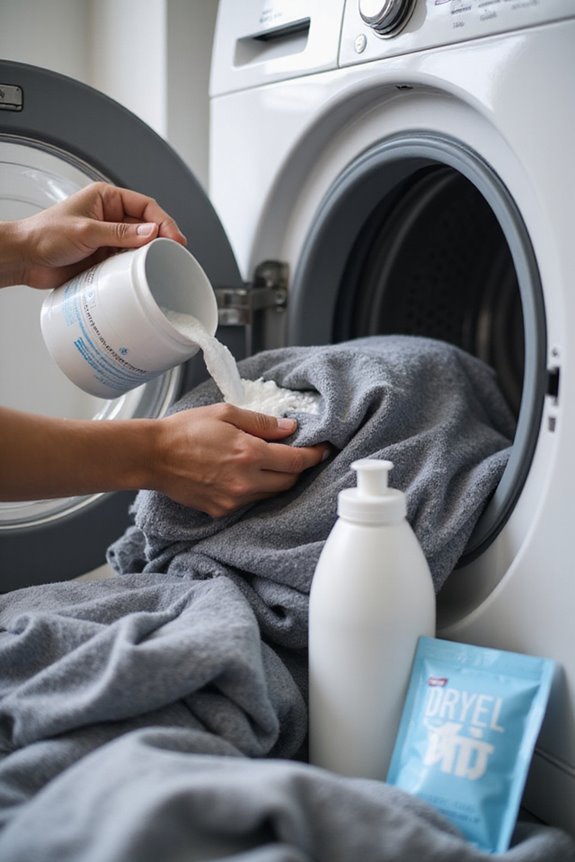
Sorting laundry might seem like a chore, but it’s actually essential for keeping our athletic gear in top shape. First, we should create four color categories: whites, darks, lights, and brights. Mixing these can lead to dye bleeding and ruined clothes. Next, let’s sort by fabric types. We need to wash activewear separately due to its odor-prone nature. Denim should also be washed alone to avoid shrinkage.
Additionally, grouping clothes by weight guarantees even washing. Heavy items like towels shouldn’t mix with lightweight athleticwear. Finally, always check care labels for special instructions. Following these sorting recommendations will not only keep our gear looking fresh, but it’ll also help extend its life—because who wants to replace their favorite gear too soon? Moreover, using specialized detergents for performance wear ensures thorough cleaning without damaging the fabric.
Detergent and Additive Guidelines
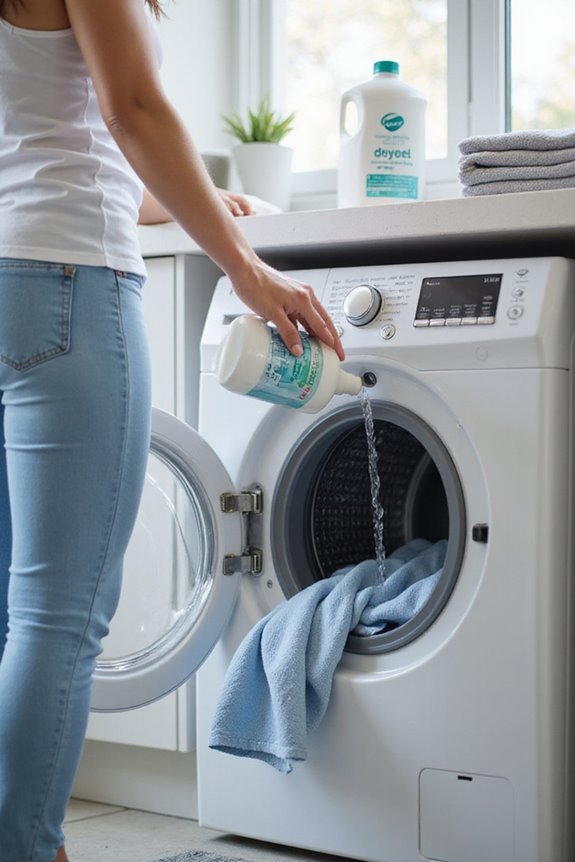
Choosing the right detergent for our athletic wear can feel overwhelming, especially with so many options out there. For effective detergent selection, we recommend trying HEX Performance; it’s specially designed for activewear, tackling odors and stains while keeping our fabrics breathable. Sport Suds is a great natural option, though it might need double the recommended dose in top-loaders.
Additive effectiveness is key too! Adding anti-odor agents can help prevent those lingering smells from sweat. And let’s be honest, nobody wants to walk around smelling like a gym bag. For stubborn stains, pre-treating with a bit of detergent can work wonders. Remember, skip the fabric softeners—they can mess with the moisture-wicking features we all love! Additionally, using a detergent with advanced stain-fighting features can significantly enhance the cleaning performance of your activewear.
Washing Machine Settings
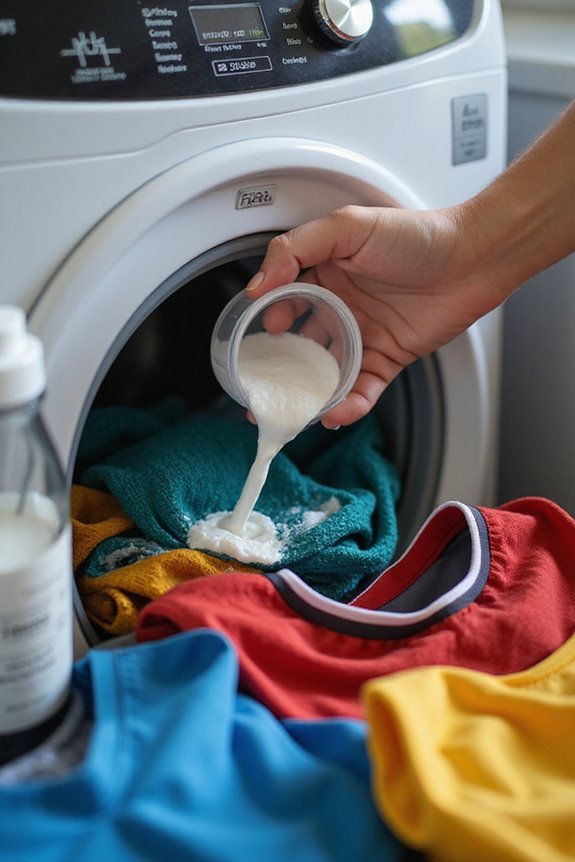
Getting the washing machine settings right is essential for keeping our athletic wear in top shape. We should opt for an Active Wear cycle if our machine has one. If not, a Delicate or Gentle cycle with cold water works best. This helps with fabric protection, preserving elasticity in our gear. For dirtier items, a Warm setting can be effective, but we must avoid hot cycles that can ruin synthetic fibers.
Also, remember to load the machine wisely. Overloading can hurt machine efficiency and leave detergent stuck on our clothes. Using mesh bags for delicate items helps prevent damage too. Additionally, choosing the right detergent is crucial, as specialized activewear detergents help eliminate odors and stains effectively. With these simple adjustments, we can keep our athletic wear fresh and ready for the next workout!
Drying and Post-Wash Handling
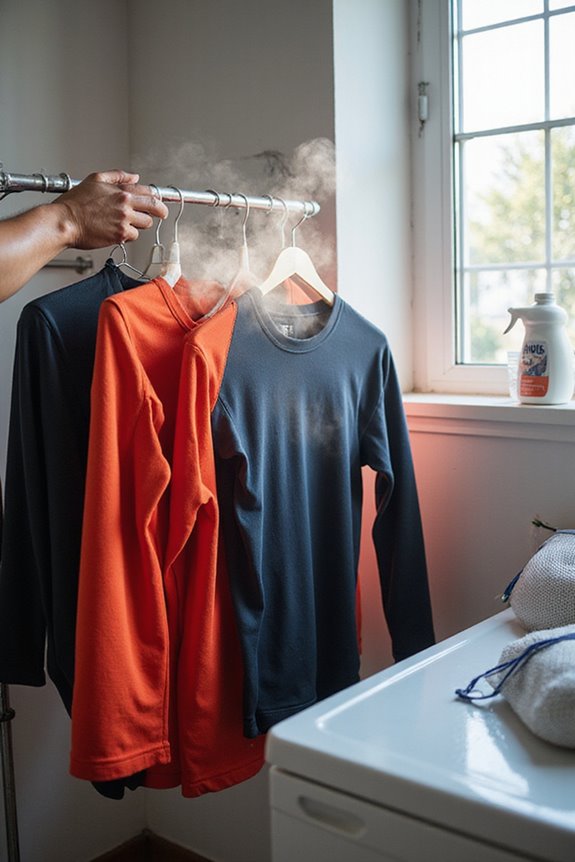
Once we’ve tackled the washing part, it’s time to focus on drying and post-wash handling. For our athletic wear, air drying techniques are key. We should lay our garments flat to dry, avoiding stretching that comes from hanging or wringing. Rolling our clothes in a clean towel is a great way to speed up moisture removal without damaging fibers. Remember, no tumble drying! High heat can ruin our moisture-wicking properties. A well-ventilated area is essential to prevent mold. After workouts, hanging clothes immediately helps reduce odor-causing bacteria. Let’s also keep delicate items inside out to protect them. Following these steps will help keep our gear in top shape, ready for the next workout! Investing in a foldable drying rack can also enhance air circulation and efficiency in the drying process.
Maintenance and Long-Term Care
When we think about maintaining our athletic gear, it’s not just about washing them after a sweaty workout. We need to use fabric preservation techniques to extend their life. For instance, always wash in cold water and stick to a gentle cycle—this helps keep our gear stretchy and colorful. After a workout, let’s air out our clothes immediately to tackle any odors.
Using a vinegar soak can also work wonders for long-term cleanliness strategies. Just remember, no fabric softeners! They can mess with moisture-wicking properties. And when it comes to drying, air drying is best to prevent shrinkage. Additionally, using eco-friendly detergents can help maintain the integrity of the fabrics while being gentle on the environment. By following these tips, we can keep our athletic gear fresh and ready for our next big challenge!
Tips for Preventing Odors and Bacteria
Taking care of our athletic gear goes beyond just washing, especially when it comes to tackling pesky odors and bacteria. One great tip we’ve found is to pre-soak our workout clothes in a vinegar and water solution. It works wonders as an odor neutralizer, breaking down bacteria and oils. For an extra fresh smell, we can use lemon juice instead. After washing, let’s air-dry our clothes to keep those pesky odors from settling in. And don’t forget to use baking soda sachets in our gym shoes—they’re fantastic for moisture absorption! By following these tips for bacteria prevention, we can keep our gear smelling fresh and ready for our next workout. Who knew household items could be so effective?
Frequently Asked Questions
How Often Should Athletes Wash Their Workout Clothes?
We believe laundry frequency is essential for odor management. After each workout, washing our gear prevents bacteria buildup and keeps our clothes fresh. Let’s prioritize hygiene while considering our environmental impact in our washing routines.
Can I Mix Different Brands of Sportswear in One Wash?
While brand compatibility might seem essential, we’ve found that sorting by fabric type and using proper laundry detergents guarantees our sportswear stays in top shape, regardless of the brands mixed in one wash.
What Types of Fabrics Are Best for Workout Clothes?
When choosing workout clothes, we should prioritize moisture-wicking fabrics for dryness and comfort. Durability factors, like resistance to wear, are essential too; fabrics like polyester and nylon excel in both areas for our active lifestyles.
How Should I Store My Workout Clothes When Not in Use?
We’ve all wondered about proper storage for our workout clothes. By ensuring moisture control and using designated spaces, we can keep our gear fresh and organized, ready for our next training session without any hassle.
Are There Specific Washing Tips for Compression Garments?
When it comes to compression care, we should wash our garments in cold or lukewarm water. This helps maintain elasticity while preventing damage, ensuring our gear stays effective and lasts longer through regular workouts.



